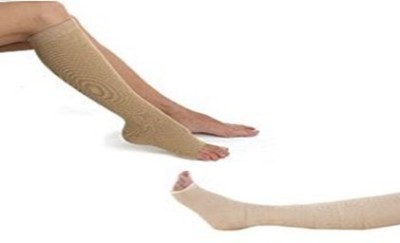New test
What lymphoedema is
Lymphoedema is a condition that causes swelling in the body's tissues. It typically affects the legs, but can occur anywhere in the body.
Lymphoedema occurs when the lymphatic system does not drain fluid away as it should. For it to be called lymphoedema it must have lasted longer than three months.
Lymphatic system
The lymphatic system helps maintain fluid balance and fights infection. It is a network that runs around the body, made up of:
- tubes that carry lymph fluid
- organs (such as the tonsils and spleen)
- nodes (lumps of tissue that filter fluid and contain cells that help fight infection).
Causes
Anybody at any age can suffer from lymphoedema.
There are two main types:
- Some people are born with the condition. Their lymph system does not develop properly (called primary lymphoedema).
- For some people, it is caused by damage to the lymph system or problems with the drainage of fluid (called secondary lymphoedema). There is an increased risk of this with:
- poor circulation (caused by varicose veins, leg ulcers, spider veins)
- surgery involving the lymph nodes
- difficulty moving around
- being overweight.
Reducing the risk
In some cases, lymphoedema is preventable.
You can reduce the risk of lymphoedema by:
- spotting it early
- staying active
- maintaining a healthy weight by eating healthily
- looking after your skin
- avoiding having any injections or blood pressure being taken on any at-risk area (such as your arm if you have had breast cancer surgery).
Treatment
Lymphoedema is not life threatening. However, it is important to treat it to prevent complications such as infections (cellulitis) or for the swelling to become so tight that it is painful and difficult to move.
Lymphoedema can not be cured but it can be managed with the right treatment and self-care. It can be treated in the following ways:
- Skincare
Looking after the skin can keep it supple and help prevent infection. - Exercise or movement
Gentle exercise and movement helps to move the fluid away from the swollen area. - Compression
Compression garments (such as socks or stockings) or bandages help reduce swelling and support the swollen area. This must be done by a healthcare professional. Other treatments may also be prescribed if required.
We have more information on compression treatments and compression garments. - Manual Lymphatic Drainage (MLD)
This is a type of massage that encourages the fluid in the swollen tissues to drain back into the lymphatic system. This is provided by a healthcare professional who is trained in MLD.
Compression stockings

What to do yourself
-
Get medical advice if you have any signs of poor circulation.
- Report any new or sudden increase in swelling to your healthcare professional.
- Maintain a healthy weight.
- Regularly wash and moisturise your skin with mild, fragrance-free products.
- Inspect your skin for any signs of infection. Get medical advice immediately if you notice:
- redness
- increased swelling
- temperature
- feeling unwell.
- Keep moving around as you are able or comfortable.
- Follow advice given by your healthcare professional regarding preventing and managing lymphoedema.
- Ensure you wear compression garments (such as stockings) if your healthcare professional has prescribed them. This is to keep the swelling under control.
- Ask your health professional for advice if you are having problems with the compression garments at home. They will teach you, your family and carers how to apply the garments.
If you cannot manage to put them on at home, we might be able to arrange help. Your health professional can refer you to social services. You will be assessed to see if you are eligible for help.
Help and support
The Lymphoedema Service (based in Teddington) gives:
- advice about preventing and managing lymphoedema
- treatment to help reduce and control your symptoms
- support and advice on self-management and lifestyle changes.
Once your condition is under control and stable, you will be discharged back to your GP. You will be given the proper garments (such as stockings) to keep the swelling down.
Ask you GP for a referral to the service. They must send the referral to hounslowandrichmond.
The Lymphoedema Support Network (LSN) is a charity providing support and information about lymphoedema. You can access them via their website or telephone on 020 7351 4480.
Contact information
Lymphoedema Service
Teddington Health and Social Care Centre (behind Teddington Memorial Hospital)
18 Queens Road
Teddington
TW11 0LR
Monday to Friday, 9am to 5pm.
For urgent help out of hours call:
Careline on 020 8744 9414.
They will tell you the best people to contact, according to what you need.